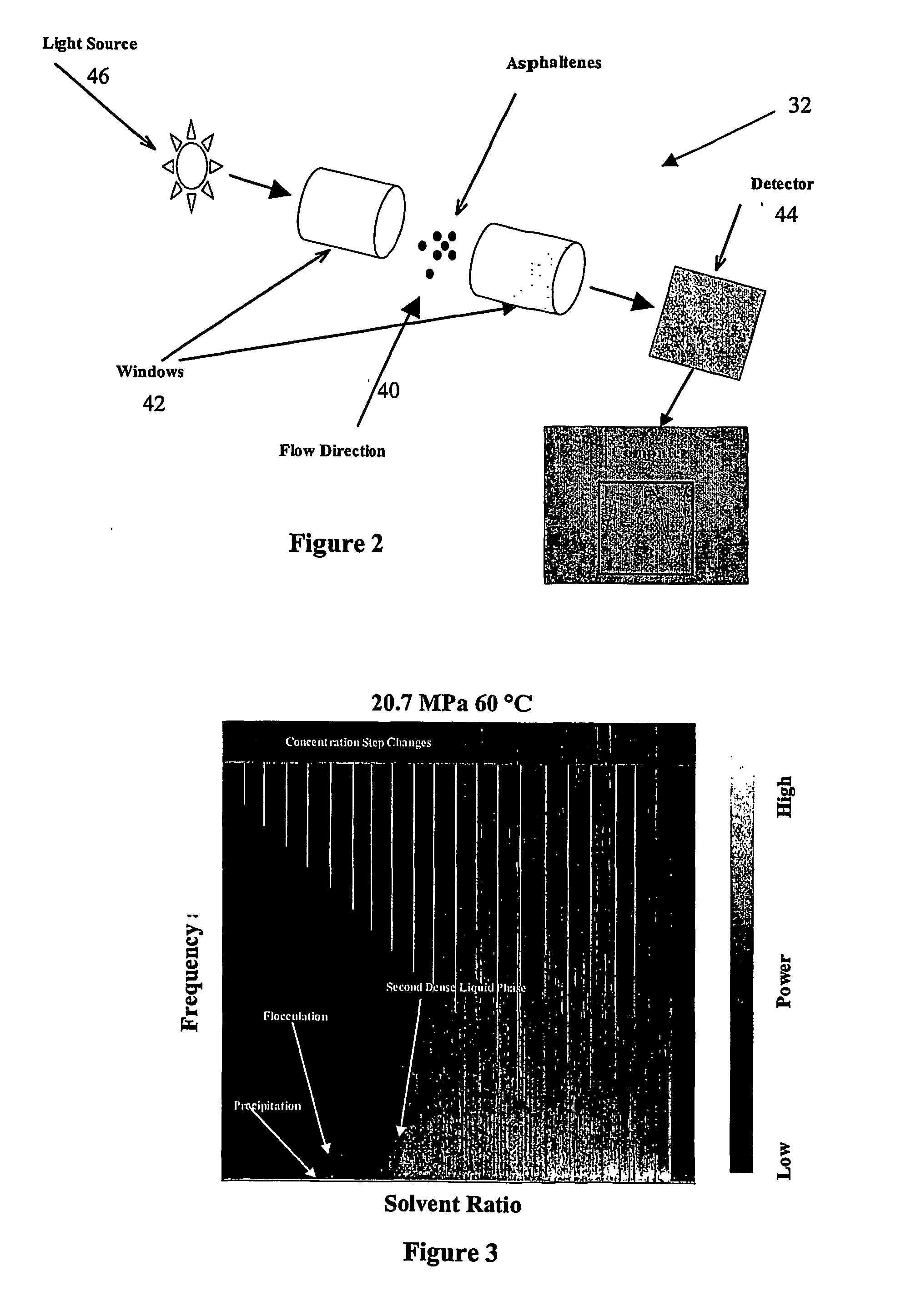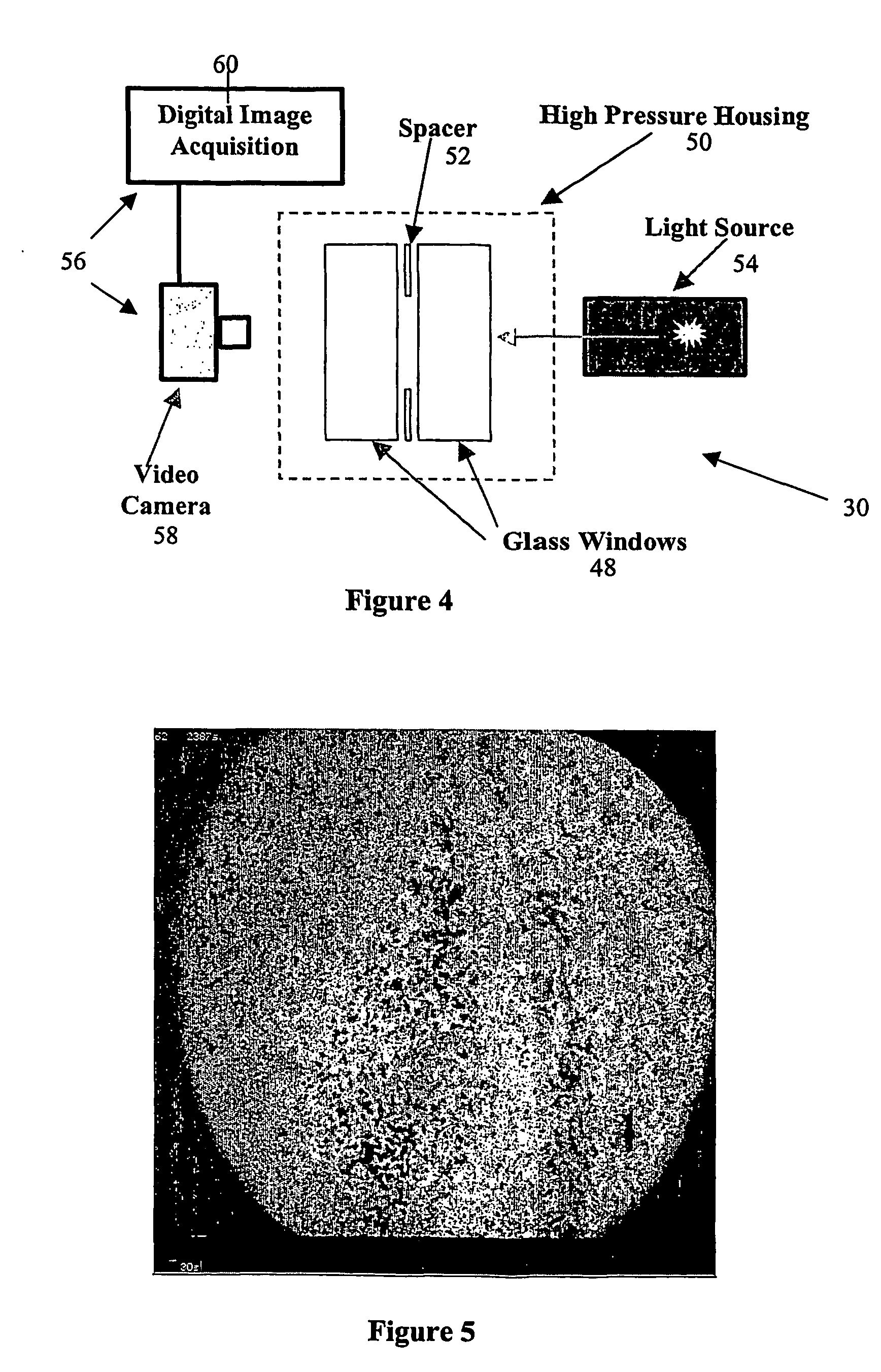Method of characterizing a dispersion using transformation techniques
a technology of transformation techniques and dispersion, which is applied in the field of dispersion analysis methods, can solve the problems of increasing difficulties, increasing the likelihood of asphaltene precipitation from crude oil and subsequent deposition in production equipment, and affecting so as to facilitate the characterization of dispersion
- Summary
- Abstract
- Description
- Claims
- Application Information
AI Technical Summary
Benefits of technology
Problems solved by technology
Method used
Image
Examples
Embodiment Construction
[0108] In a first preferred embodiment, the invention is directed a method for analyzing or characterizing a dispersion comprising an oil mixed with a solvent. In particular, in the first preferred embodiment the invention is directed specifically at characterizing the dispersion with respect to the stages of separation of asphaltene particles which are contained in a crude oil.
[0109] Precipitation is the first separation stage in which asphaltene particles form as a distinct phase as they come out of solution. The second separation stage is the flocculation or agglomeration stage in which the small asphaltene particles clump together and grow larger. The third separation stage is deposition, which is the point at which the asphaltene particles are so large that they can no longer be supported by the liquid and therefore they settle out on solid surfaces. Finally, a fourth stage may be the formation of a second dense liquid phase which is rich in solvent as the solvent reaches a sa...
PUM
| Property | Measurement | Unit |
|---|---|---|
| temperature | aaaaa | aaaaa |
| inter-window distance | aaaaa | aaaaa |
| flow rate | aaaaa | aaaaa |
Abstract
Description
Claims
Application Information
 Login to View More
Login to View More - R&D
- Intellectual Property
- Life Sciences
- Materials
- Tech Scout
- Unparalleled Data Quality
- Higher Quality Content
- 60% Fewer Hallucinations
Browse by: Latest US Patents, China's latest patents, Technical Efficacy Thesaurus, Application Domain, Technology Topic, Popular Technical Reports.
© 2025 PatSnap. All rights reserved.Legal|Privacy policy|Modern Slavery Act Transparency Statement|Sitemap|About US| Contact US: help@patsnap.com



